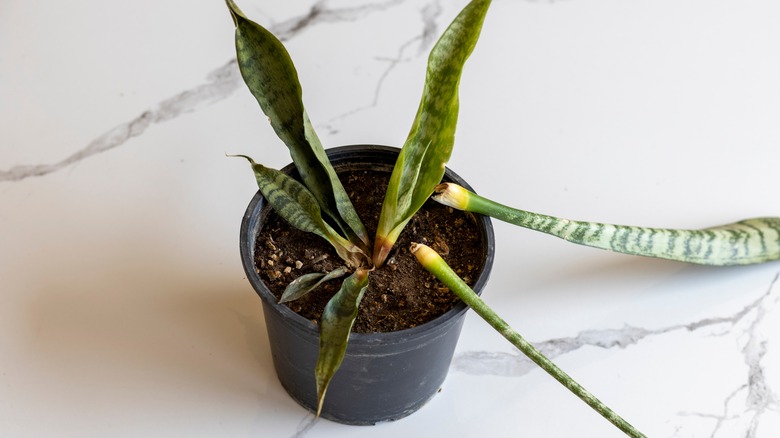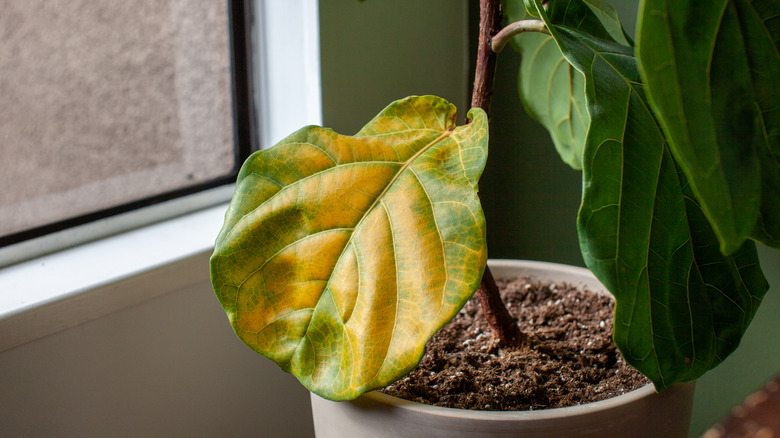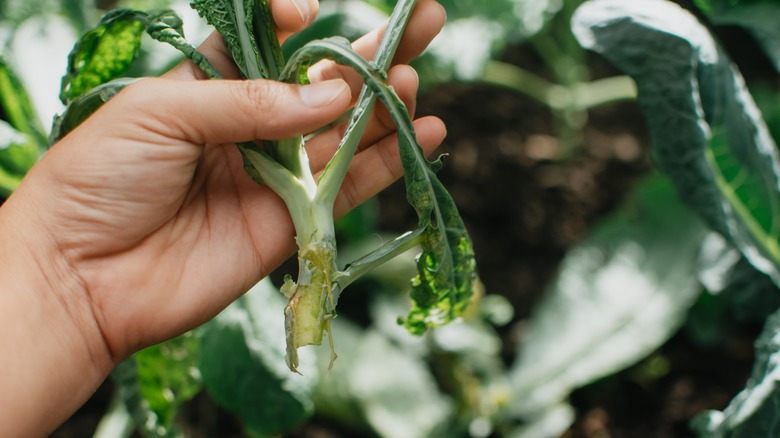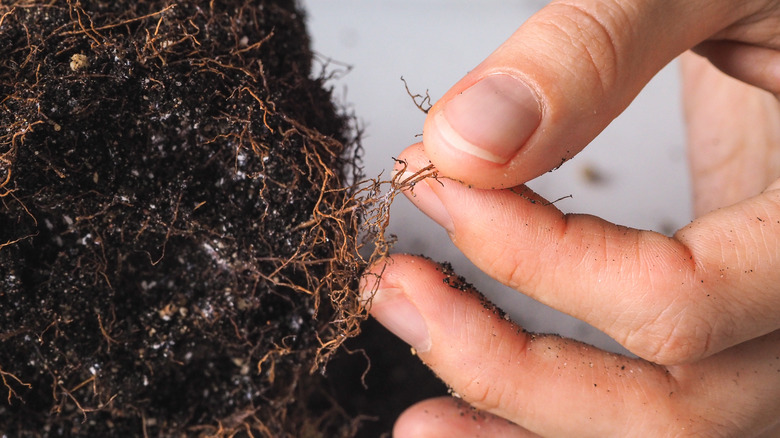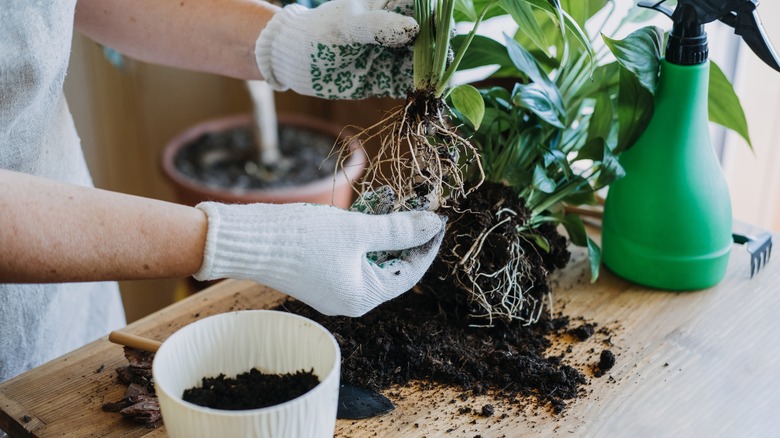What Is Root Rot And How To Deal With It
Watching a plant grow from a small cutting to a mature houseplant is an incredibly satisfying thing, which is why so many people take up plant care as their preferred hobby. The same can be said for outdoor gardening — whether your goal is to be self-sufficient with fresh veggies, or simply have something to tend to, growing your own field of crops or flowers can be very rewarding.
What isn't so rewarding, though, is watching your plants and crops get diseased, start to wilt, or die. There are many ways plants can get sick, but most plants share a few common fatalities. One such common disease is root rot, which is exactly what it sounds like; your plant's root system starts to break down and eventually disintegrates, explains Wisconsin Horticulture. Root rot is a very serious disease, and can often lead to your plant dying. If you know how to identify and treat root rot early, though, you can save yourself from serious plant-parent heartbreak.
Identifying root rot
The first step in treating your plant for root rot is being able to correctly identify it. Root rot shares visual indicators with a host of other diseases, but specific combinations of colors, smells, and behaviors can help indicate root rot is at play. The first sign to look for is discolored leaves. Specifically, yellowing or black leaves, warns TPG. Another visual sign of root rot is if the leaves look shriveled and dry but the soil is wet or you know that the plant is regularly watered. Root rot deprives your plant of oxygen, which can make the leaves appear crunchy and wilted.
Fungus gnats, while not fatal on their own, are another indication of root rot. They'll appear in the moist top layer of soil and often indicate an overwatering problem. In addition, your plant may start to smell as the roots begin to rot. Be on the lookout for a sulfurous, egg-like smell. This will be easier to identify in houseplants than in outdoor plants, but if you notice all of these in combination, it's time to check for root rot.
Avoid causing root rot
The biggest cause of root rot is overwatering your plant. The fungi that cause root rot thrive in moist conditions, and while plants do need water, too much can be detrimental, creating the ideal conditions for different bacteria and fungi to grow, notes MGB Lifestyle. If you have a problem gauging your plant's water needs, consider purchasing a moisture meter.
Poor drainage is another common cause of root rot. Overwatering usually doesn't refer to giving your plant too much water at a time, but rather not allowing the water to properly drain out. If the water sits stagnant within the pot and isn't allowed to flow out, it will create the perfect circumstances for fungi to infect your plant's root system. Don't opt for underwatering your plants, though, as that can also cause root rot by causing the roots to shrivel up and dry out, thus depriving your plant of oxygen.
Treating root rot
Root rot is usually fatal once it becomes noticeable. However, there are ways of bringing a plant back to life. The most important factor is catching it as early as possible. There's no harm in uprooting a plant if you even suspect it of having root rot. But what should you look for in the plant's root system? Healthy plants have white to off-white, firm roots, whereas rotting roots will be dark orange, brown, or black, mushy, and slimy. They'll probably smell quite unpleasant, too. To save your plant, you'll need to cut off all the affected roots.
Begin by breaking up the root ball with your hand, removing as much dirt as possible. Assess the damage — if there are untouched, healthy roots, then your plant has a fighting chance. It is imperative that you only use sterilized, sharp shears to remove the dead roots, and that you also dip them in a mixture of one part bleach and three parts water in between every cut to avoid spreading the disease to the healthy roots, explains MGB Lifestyle.
Repotting your healthy plant
Next, wash your plant's roots off in a gentle stream of room temperature water, suggests MGB Lifestyle. This will remove any slime as well as any potential transfer of the fungus. Now it's time to assess your plant. While it may be sad to see your lush plant become leggy, you need to remove any damaged leaves with clean, disinfected shears. Your plant's root system is incredibly fragile right now, and it needs to put all its energy into creating new roots as opposed to saving dead leaves.
Now it's time to repot your plant. You may want to opt for a smaller, shallower pot if you had to remove a lot of the roots, but be careful not to go too small, as your plant may become root-bound. If you want to use the same pot, thoroughly wash it with soap and hot water and disinfect it first. If your plant developed root rot due to improper drainage, create more holes with a ceramic drill bit. Replant with high-quality soil and keep a close eye on it in the coming few weeks.
